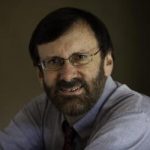Taking the Ashes
Many people keep their religion to themselves, worshipping within the stoney confines of a safe, secure sanctuary.
Sara Miles, who feeds the poor out at an Episcopal church in San Francisco’s vibrant Mission District, takes her faith to the streets and tells us all about it in a wondrous new book titled City of God.
It’s the story of her experiences on Ash Wednesday—the first day of Lent—when Christians get a smudge on their foreheads and are reminded, “You’re dust and to dust you will return.”
Miles dawns a black cassock and takes her jar of ashes to the intersection of Mission and 24th Street, offering the Ash Wednesday ritual to dope dealers, teenage girls on cell phones, winos, high-tech yuppies, Mexicans hanging out at McDonalds, the ladies in the beauty parlor, and anyone else who crosses her path.
“The good news of Ash Wednesday, the blessing so many people seek so fervently, comes from acknowledging the truth: that we are all going to die,” she writes. “That these busy lives, full of eating and drinking and buying and talking on our cell phones, are going down to dust. That despite the lies of the culture, the fantasy that money or objects will keep us alive, we mortals are just mortal and connected to one another through that raw fleshy fact.”
San Francisco, where I spent many years working as a religion writer for the morning newspaper, is a notoriously “unchurched” city. As Miles notes, it has a long reputation as a wide-open port full of “sailors, adventurers, immigrants, gamblers, gold-diggers, loose women, beatniks, hippies, activists, and queers.”
But, as Sara and I know, it’s also a place teeming with religion and spirituality—Catholic street processions, Buddhist monks, Pentecostal preachers, New Age mystics, Mormon missionaries, Muslim immigrants, yoga studios, and back-alley Chinese temples.
Miles, a former reporter herself, is a fantastic writer. I love the picture she paints of her beloved and beguiling Mission District, of those afternoons “when light slides at a slant through the city’s air, illuminating each face with an almost holy glow.”
“White people seem golden; black people gleam; and brown faces, from that of the scruffiest wino in a baseball cap to the fussiest baby yelling in its stroller, are radiant.”
I also love how she turns her critique of “organized religion” back onto herself:
“Church is small. Church is so much more cowardly and less imaginative than it has to be; it’s so mindlessly stubborn about its own correctness, proud of its own power, judgmental, and unkind toward those who disagree. But these failures of the institution, as the experiences of Ash Wednesday reveal, are precisely the same as my own. My nostalgia, my desire to stay indoors, to refuse new experiences, to ignore demanding neighbors, to hide from the Spirit in the habitual -- these are sins that call for repentance.”
That’s something worth remembering this year, on Wednesday March 5, or for forty days and forty nights, or perhaps even on every holy day of every holy year in every holy city.


